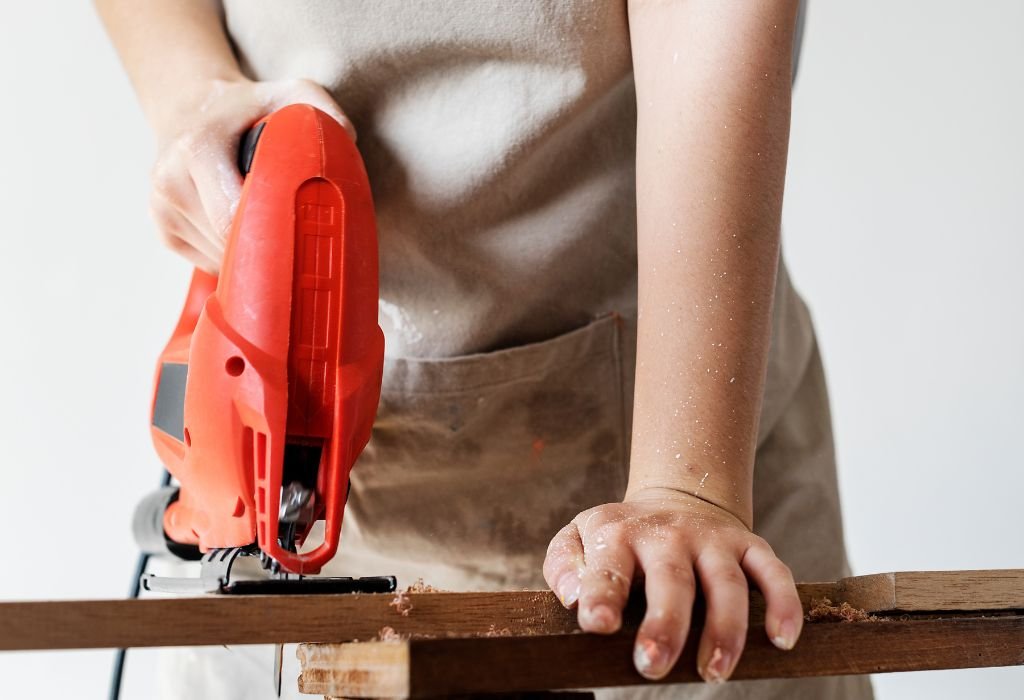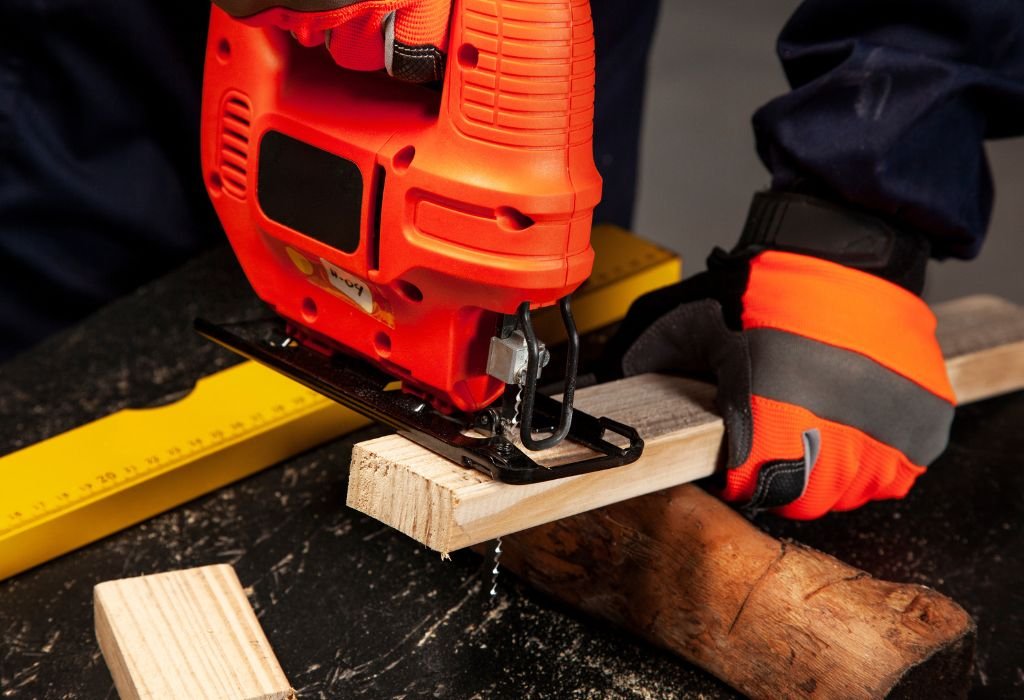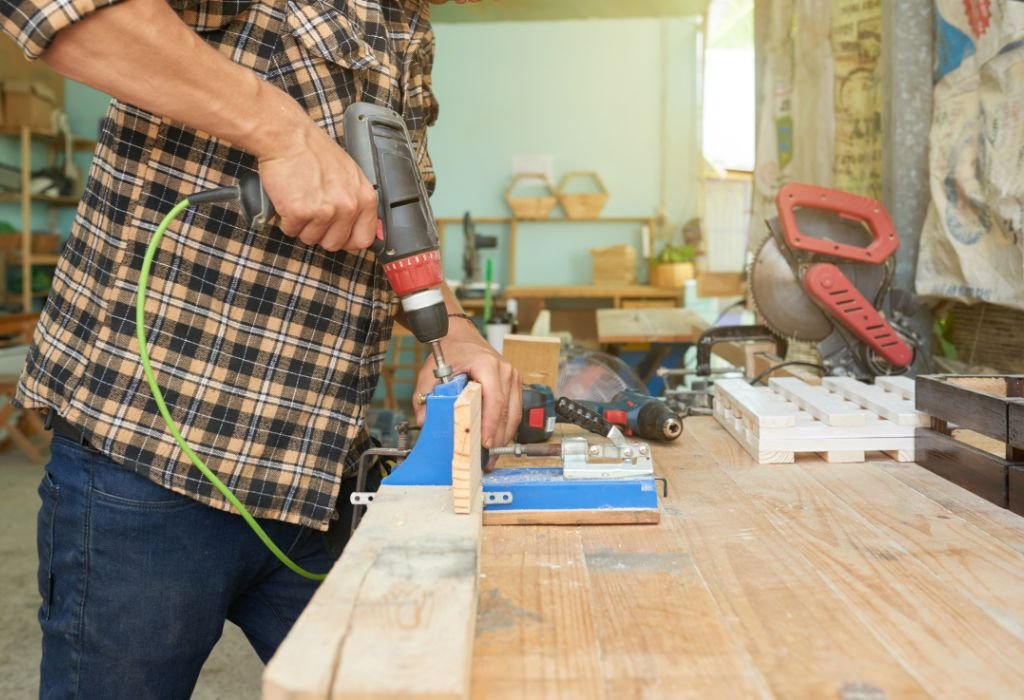Many homeowners eventually find an old cordless drill sitting at the back of their garage, covered in dust and no longer holding a charge.
The drill might have been replaced by a newer model with better torque, lighter weight, or brushless motor technology, but the old one still feels too valuable to throw away.
The question becomes whether to repair it, repurpose it, donate it, or recycle it, and each choice comes with unique benefits and considerations.
Throwing cordless drills into the trash is not only wasteful but also harmful to the environment, since batteries and metals can leak toxic materials into soil and water.
According to the EPA, the U.S. generates over 7 million tons of e-waste annually, and power tools are a growing part of that problem.
At the same time, DIY enthusiasts often look for creative ways to reuse old drill parts, from small motors in hobby projects to tool donations that help schools and community workshops.
Understanding what to do with old cordless drills helps reduce clutter, saves resources, and even supports sustainability goals.
This complete guide explores repair, reuse, donation, recycling, and best practices so you can decide the smartest way to handle your old power tools.
Why Old Cordless Drills Pile Up in Garages

Many old cordless drills stop working because their rechargeable batteries no longer hold a charge. In most cases, the tool itself still works but the battery is the weak link.
Some drills become obsolete because newer brushless models offer higher efficiency and better performance, making older brushed models less attractive. Manufacturers also discontinue parts, making it harder to repair aging tools.
People often keep old drills “just in case,” even when they know they will not use them. Over time, garages fill up with broken or outdated tools that could have been reused or recycled.
This clutter not only takes up space but also prevents tools from serving a useful purpose in other hands. Knowing why drills accumulate is the first step to dealing with them properly.
Why do people keep old drills?
Because they hope to use them again one day.
Do batteries cause drills to be replaced?
Yes, dead batteries are the most common reason.
Are older drills less efficient?
Yes, especially compared to brushless models.
Do new drills outperform old ones?
Yes, they provide more torque and longer run times.
Can old drills be fixed easily?
Sometimes, but parts may be hard to find.
Option 1: Repair or Refurbish Old Cordless Drills
One of the best options for an old cordless drill is repair, especially if the tool body is still in good condition. Replacing worn-out rechargeable batteries is often enough to bring the tool back to life.
Many drill models allow the motor brushes or switches to be replaced. With basic mechanical skills, these repairs can extend the life of the tool significantly.
Refurbished drills are also sold at second-hand shops or online, proving that repair is a practical choice. Professional tool repair shops can help if DIY repair is not possible.
While repairs cost money, they are usually cheaper than buying a brand-new drill. Repairing also reduces waste and keeps tools in circulation longer.
Can old drills be repaired?
Yes, with new batteries or small part replacements.
Is it worth replacing batteries?
Yes, especially if the tool is otherwise functional.
Do parts for old drills exist?
Yes, though availability depends on the brand and age.
Are refurbished drills reliable?
Yes, if repaired with quality components.
Who repairs old drills?
Tool shops, electricians, or DIY enthusiasts.
Option 2: Repurpose Old Drills for DIY Projects
Even if a drill no longer functions as intended, its motor and components can be repurposed. The motors inside cordless drills are powerful and versatile for small machines.
DIY enthusiasts have converted drill motors into miniature wind turbines, rotary tools, or even small belt sanders. Some people also use them for homemade mixers or screwdrivers.
Schools and STEM programs often appreciate drill parts for educational projects. Teaching students about electronics, gears, and motors becomes easier with salvaged components.
Creative repurposing ensures the tool continues to provide value. It also keeps materials out of landfills and encourages innovation.
Can drill motors be reused?
Yes, they are useful in many DIY projects.
Are DIY projects safe?
Yes, with proper handling and supervision.
What’s a simple reuse idea?
Turning it into a handheld screwdriver.
Do old drills work as screwdrivers?
Yes, by using low-speed manual functions.
Can schools use them for STEM projects?
Yes, many educational programs accept them.
Option 3: Donate or Sell Old Cordless Drills

If a drill still works, donation is an excellent way to give it a second life. Many charities, schools, and community workshops gladly accept working tools.
Tool libraries, which lend tools like books, often welcome cordless drills. Donating to them supports community sharing and reduces waste.
Selling online through platforms like eBay, Facebook Marketplace, or Craigslist is another option. Even slightly used or older models still hold value for hobbyists.
Donations and sales extend the life of the tool and provide affordable options for others. They also prevent tools from ending up in landfills unnecessarily.
Can old drills be donated?
Yes, many organizations accept them.
Where can they be sold?
Online marketplaces or garage sales.
What is a tool library?
A community service that lends tools.
Do charities accept tools?
Yes, especially vocational schools and nonprofits.
Is resale a good option?
Yes, it provides extra income and reduces waste.
Option 4: Recycle Through E-Waste Programs
Cordless drills are classified as e-waste because they contain metals, plastics, and rechargeable batteries. These materials must be processed properly to avoid environmental harm.
Many recycling centers accept cordless drills through dedicated e-waste drop-offs. Scrap yards may also take them to recover steel, copper, and other metals.
Batteries should always be removed and recycled separately. Lithium-ion and nickel-cadmium batteries contain hazardous materials that cannot go in regular trash.
Recycling keeps harmful substances out of landfills. It also allows valuable raw materials to be reused in manufacturing.
Are cordless drills e-waste?
Yes, they contain batteries and electronics.
Can recycling centers take them?
Yes, many accept them at drop-off points.
Is scrap metal valuable?
Yes, steel and copper can be recovered.
Why recycle batteries separately?
Because they contain toxic chemicals.
What happens if drills go to landfill?
They pollute soil and groundwater.
Option 5: Upcycle Batteries and Chargers
Batteries from old cordless drills may sometimes be reconditioned. DIY kits are available that help revive batteries, though results vary.
Chargers may also still be useful if they are compatible with newer drill models. Some manufacturers maintain compatibility across product lines.
If neither batteries nor chargers can be reused, recycling is the best choice. Proper disposal prevents toxic waste from contaminating the environment.
Upcycling or recycling batteries and chargers ensures fewer materials are wasted. It also makes replacing drills more environmentally friendly.
Can old drill batteries be reused?
Yes, if they can be reconditioned.
Do chargers work on new drills?
Sometimes, depending on the brand.
Are reconditioned batteries safe?
Yes, but they may not last as long.
How to recycle lithium-ion batteries?
Take them to certified recycling centers.
Is it legal to throw them away?
No, many states prohibit landfill disposal.
Environmental Impact of Improper Drill Disposal

Improper disposal of cordless drills contributes to the global e-waste problem. Toxic metals and chemicals from batteries leach into soil and groundwater.
Plastics and metals that could have been recycled end up wasted. This increases the demand for raw material extraction, which strains natural resources.
E-waste is one of the fastest-growing types of waste in the world. Old power tools are part of this growing challenge.
Responsible recycling and repurposing reduces landfill waste. It also lowers greenhouse gas emissions associated with raw material production.
What happens if drills go in trash?
They release harmful chemicals into the environment.
Are drill parts toxic?
Yes, especially nickel and lithium from batteries.
Does recycling help the planet?
Yes, it conserves materials and reduces pollution.
Is e-waste a growing problem?
Yes, it increases yearly worldwide.
Can reusing tools cut emissions?
Yes, it reduces demand for new manufacturing.
Best Practices: Deciding What to Do With Your Old Drill
The best approach depends on the condition of the drill. If it still works, donation or resale is an excellent choice.
If the battery is the only issue, replacing or refurbishing may be worthwhile. This restores full functionality with minimal cost.
When a drill is beyond repair, recycling is the most responsible option. Parts and materials can be recovered rather than wasted.
Looking ahead, buying higher-quality tools with replaceable batteries helps reduce future waste. Choosing sustainable practices benefits both the user and the environment.
How do I decide what to do with an old drill?
Evaluate whether it still functions.
Is repairing always best?
Yes, if parts are affordable and available.
When should I recycle instead?
When repair or donation is no longer possible.
Are donations better than resale?
Yes, they help communities and reduce waste.
How to avoid tool waste in the future?
Buy durable tools with replaceable parts.
Conclusion
Old cordless drills should never simply be thrown away. They contain reusable materials and potential value for others.
Repairing, repurposing, donating, or recycling are the best options. Each choice extends the life of the tool or protects the environment.
With millions of power tools discarded every year, responsible disposal is more important than ever. Homeowners can make a difference by treating old drills as resources instead of waste.
Final advice: assess the drill’s condition, choose the most responsible option, and help reduce the growing e-waste problem while benefiting your community.

I’m John F. Nicholas, the founder, lead writer, and drill enthusiast behind 101drill.com. With years of hands-on experience in power tools and DIY projects, I created this platform to share practical knowledge, expert tips, and real-world insights to help others master the art of drilling.
